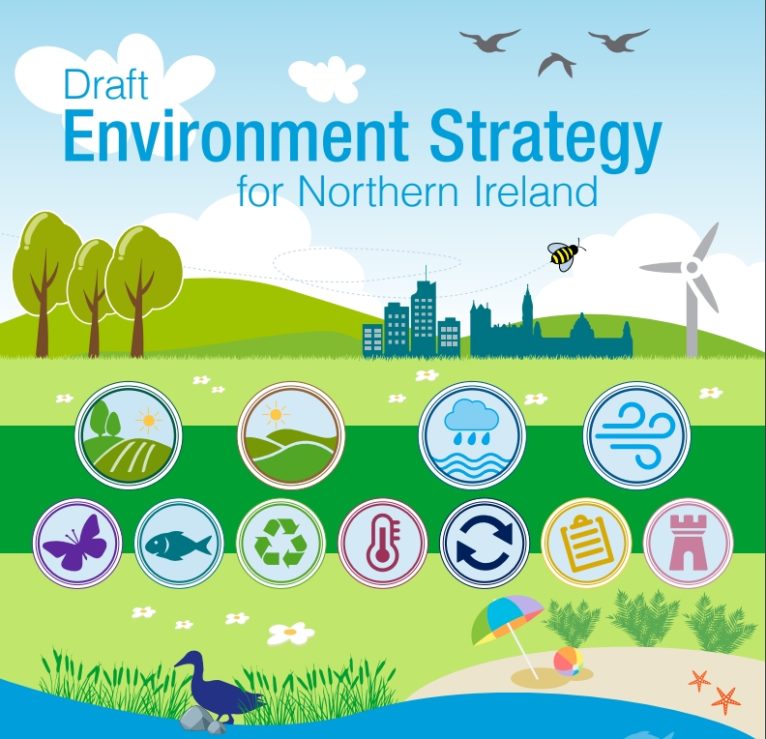Adequate, but could do (much) better: The OEP takes on the NI Environment Strategy

A few months in and the OEP’s presence is starting to be felt in Northern Ireland. The new environmental watchdog covers both England and Northern Ireland, but due to both a delay in being confirmed in NI, a glut of complaints in England, and a lack of a functioning executive in NI, it has mostly been in the news for its English activities. This may be about to change: the OEP has just published its response to a request for advice on the forthcoming Northern Ireland Environment Improvement Plan, the Northern Ireland Environment Strategy.
A double test for DAERA and the OEP
This advice is a key test for the main players in NI environmental governance. This is obviously first and foremost a test for the Department of Agriculture, Environment and Rural Affairs. The NI Strategy is a very long time coming. It was first mooted, and consulted upon in 2019, during the previous stint of no-government (2017-2020). It was then revised and re-consulted upon in late 2021 after the Executive returned in early 2020. It has since been adopted in March 2022 – but has not been published since as the renewed absence of an Executive (since the May 2022 elections) means no minister can sign-off on it.
Until now, discussions on the NI Environment Strategy (the equivalent to England’s 25 Year Environment Plan) have been fully local – local stakeholders, with more or less good relations with the Department. While the Department did publish a summary of the responses to the Consultation, the extent to which these (potentially contradictory) local voices have been listened to remains unclear, as no one has seen the final strategy.
No one, that is, except for the OEP.
With its advice, the OEP brings in an external perspective in this previously local debate. Peppered through with references to English case law and its commentary on the English EIP, the OEP signals that the NI Environment Strategy has to hold up to equivalent standards as the one in England. When the NI Executive decided to opt-in the New environmental governance and oversight framework created through the Environment Act 2021– while Scotland and Wales went their own way – they opened themselves to an English, or at least a not fully NI-centric view into the way the environment is governed in NI.
This advice is thus also a test for the OEP itself: will it manage to strike the right tone (and indeed, what is the right tone for this new oversight body?) between criticism and advice, between the different sources of pressure governments are under and the need for urgent action to tackled the joint climate and biodiversity emergencies? Will it manage to not simply sound like an English body acting in NI?
Adequate and appropriate – but with many caveats
The advice makes for odd reading – it is commenting on a document we do not have access to. While some changes have been made to the Strategy as consulted upon in the Winter of 2021 (and the OEP overwhelmingly welcomes these changes) we do not fully know what these changes are. As such, it is impossible to judge what the OEP may have missed in the new version. But we can note what it has found.
Overall, the concerns it has tend to echo the concerns from environmental stakeholders in their consultation responses and in an open letter in January 2022. That open letter worried that “of the 225 actions and targets within the strategy, 76% (172) have no timeframe, and 78% (177) are either partly or completely unmeasurable”, the OEP advice conversely states “there are over 300 commitments or targets across the 6 SEOs [Strategic Environmental Outcomes], with 65% of these having no deadlines for delivery. Over half are not measurable, and over a quarter of the commitments are neither measurable nor have a deadline”. Thus, while there are apparently more commitments in the new strategy, with even a number of new deadlines added, the deep-seated problems of the quality and actionability of these commitments – are they clear, is there a deadline, can we measure success, is there data to do so etc. – remains.
This is at the heart of the OEP advice: the targets need to be clearer (with additional “weight and confidence”), especially as contrary to England there is no legally binding targets for NI in the 2021 Environment Act and “regrettably governments often fail to meet voluntary targets”. And the targets need to be measurable and measurement needs to be funded: “Implementing, monitoring and evaluating the EIP, will require adequate resources. We encourage DAERA to set out more clearly how it will resource this.”
Another key criticism is the lack of prioritization and focus. 300 commitments, but which are the important ones? And if some are more important than others, how has this been determined? The OEP is particularly critical here, noting how “Environmental issues of different scales are presented together, without any evaluation of which pose the greatest risks, or where action can have the greatest positive impact to significantly improve the natural environment”. It notes how little space is given to nature or air quality, compared to litter and waste and its 40 commitments. Beyond the content of the ES, the OEP also worries about the prioritization of the environment by the NI Executive and asks for the ES to be given parity with the Green Growth Strategy (the new overall industrial strategy for NI).
This Environment Strategy, as the 25YEP, is to be a living document. Greater clarity on what parts of the environment is prioritized, and what targets are established should follow from the adoption of a flurry of 41 (!!!) smaller strategies. This dependency on follow-up strategies weakens the ES status as a one-stop shop for environmental ambition in NI, it also makes each of these follow-up strategies a further battleground between supporters of higher ambition and their opponents.
Where to next?
In its first advice for NI, the OEP adopted a resolute stance that when it comes to clear, actionable targets, NI would be held to the same standards as England. This matters especially as the vaguer the targets, the easier it is for governments not to implement them. But the OEP, while critical of DAERA, did not fully side with environmental groups either. Thus, even though the OEP repeatedly asked for actionable targets it did not push DAERA for greater ambition across the board – for example on ammonia, it supported halting additional damage first, before, eventually, moving towards reducing harm.
Now the ball is in DAERA’s court. As the strategy while officially finalized was never properly published and did not receive Executive backing, nothing is stopping a future NI Executive from amending it. In the absence of an Executive, it will become the NI EIP by July 2023, warts and all, and we can expect the first yearly review of its implementation by the OEP to be even more critical.




